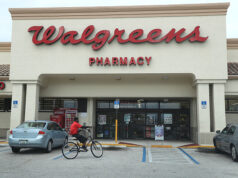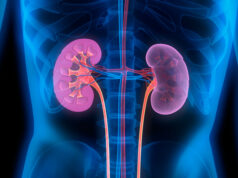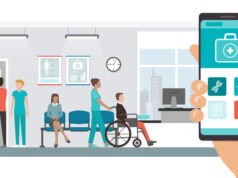
Sherlock Biosciences received the first FDA emergency authorization for a CRISPR-based Covid-19 test, a 2020 milestone that showed the technology can work in diagnostics. But it didn’t save time. Sherlock’s lab test took two-and-a-half hours, compared to PCR test results that can be produced in about an hour. Sherlock has since made advances, claiming it’s now capable of producing a result in less than 10 minutes. The company aims to bring its diagnostic capabilities beyond the lab and into homes around the world, and it has raised $80 million to get started.
The Series B round of funding announced Tuesday was led by Novalis LifeSciences.
Cambridge, Massachusetts-based Sherlock has two diagnostic technologies. Its CRISPR platform, licensed from the Broad Institute of MIT and Harvard, identifies DNA or RNA of a target pathogen. When the target is detected, the CRISPR-Cas enzyme activates to produce a signal that is read as a diagnosis. The second technology, called INSPECTR, is from Harvard’s Wyss Institute for Biologically Inspired Engineering. Upon detecting its nucleic acid target, this synthetic biology technology generates a synthetic protein that signals a diagnosis.
Sherlock had initially developed both technologies separately, a strategy that the company maintained through the onset of the pandemic. But CEO Bryan Dechairo, a former Myriad Genetics executive, said that Sherlock has since found that the combination of the two technologies has advantages. CRISPR offers the ability to design a test that’s highly specific to a particular target nucleic acid. The synthetic biology technology enables a nucleic acid signal to be read out in a variety of ways, including a simple, low-cost paper strip. The synbio tech is also good for multiplexing—testing for multiple pathogens from a single sample. Dechairo said the combination produces fast, highly accurate results with simple equipment that operates at ambient temperatures and without even needing a power supply.
“Low cost of goods,” Dechairo said. “That’s what’s going to enable diagnoses for disease anywhere around the world.”
With the new capital, Sherlock plans to place its technologies on two different diagnostic devices. Both devices will produce rapid results, but they’re intended for different markets because what clinicians want is different from what consumers want, Dechairo said. The more durable device is for repeated testing, such as what a doctor might do in a clinic. It will be powered by batteries or a USB connection, but still offer low cost of goods. The second device is intended for consumers, who only want to ask a diagnostic question once. In addition to home use, this disposable device will also give the diagnostic technology greater global reach, Dechairo said.
When Sherlock was founded, its focus was on developing diagnostics for infectious disease and cancer. That’s still the focus, and the company will deploy some of the new capital toward clinical trials that could expand the company’s technology beyond its current uses in Covid testing. Sherlock will focus on a few indications where the company can commercialize the technology. For others, it will look to partner with larger companies in the pharmaceutical and diagnostics industries. The partnerships could extend beyond healthcare. Dechairo said that the capability to detect DNA or RNA on a point-of-need device opens doors to opportunities in biodefense, veterinary care, and testing for plant pathogens in farm fields. For such applications, Sherlock will look for partners in those industries, Dechairo said.
Sherlock launched in 2019, backed by a $31 million Series A round of funding. The Series B round included announced Tuesday included new investors Illumina Ventures, Albany Capital, and Catalio Capital Management. Also participating were Northpond Ventures and Good Ventures, among others earlier investors.
Public domain image by Flickr user NIH Image Gallery







